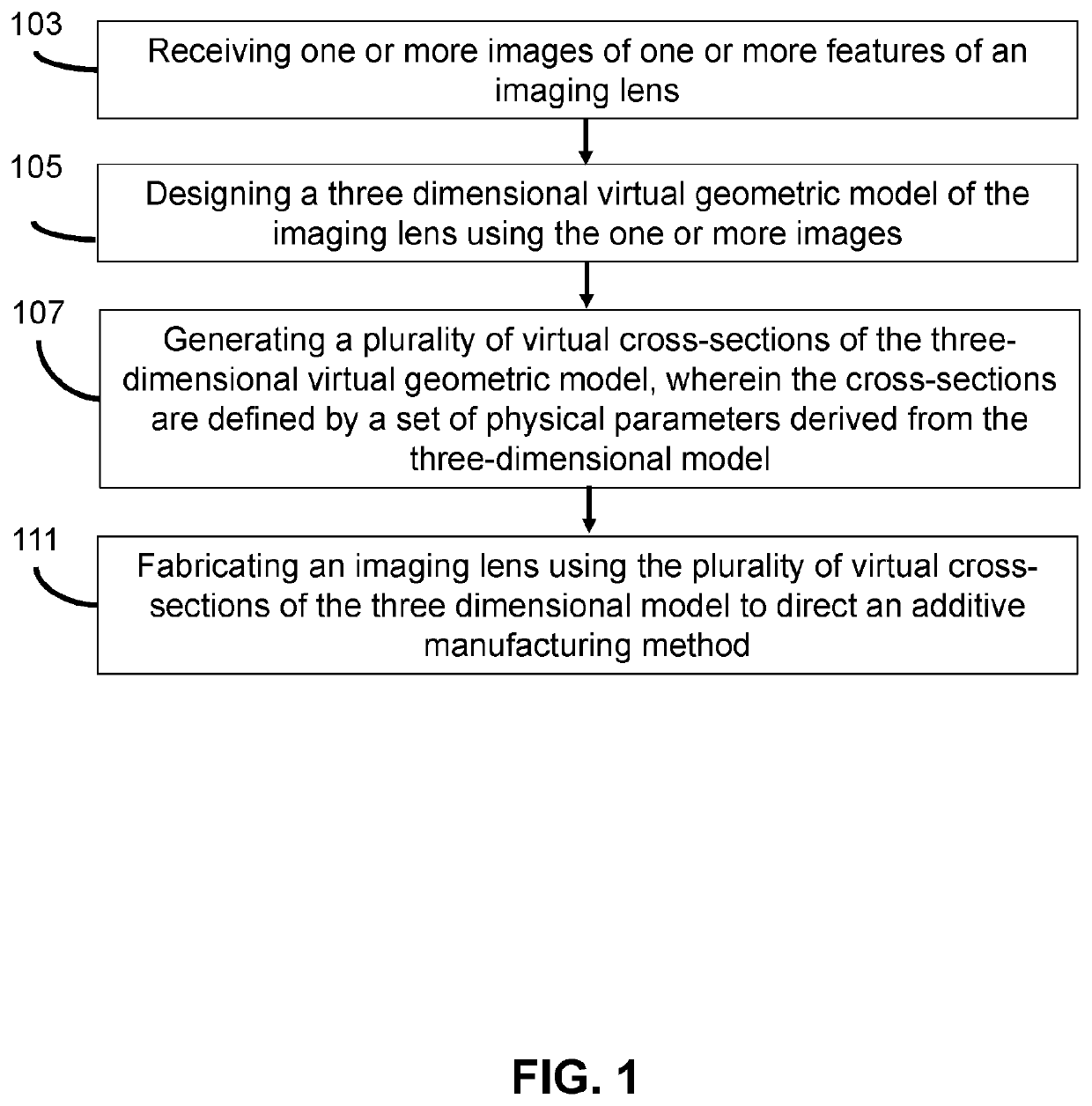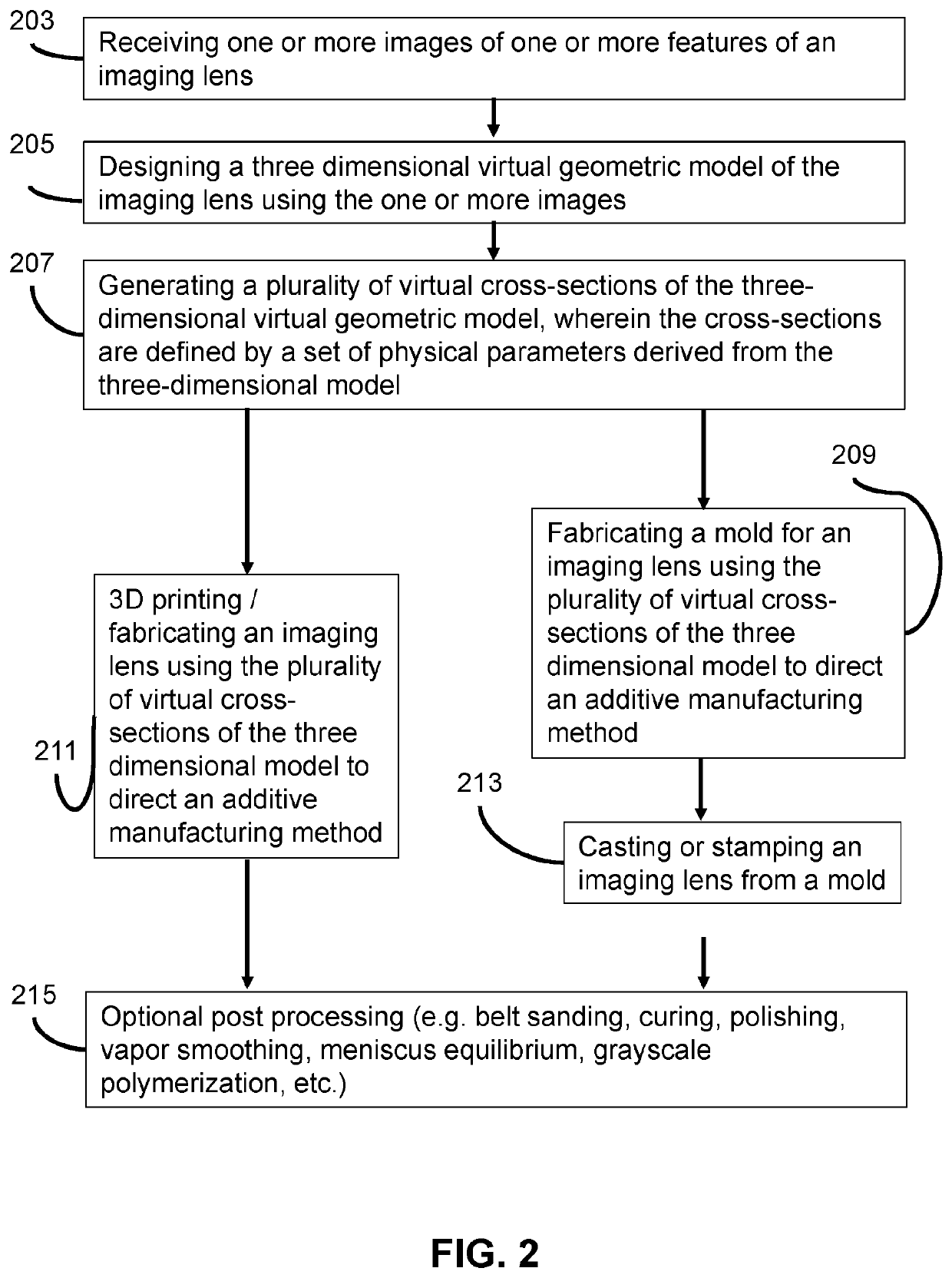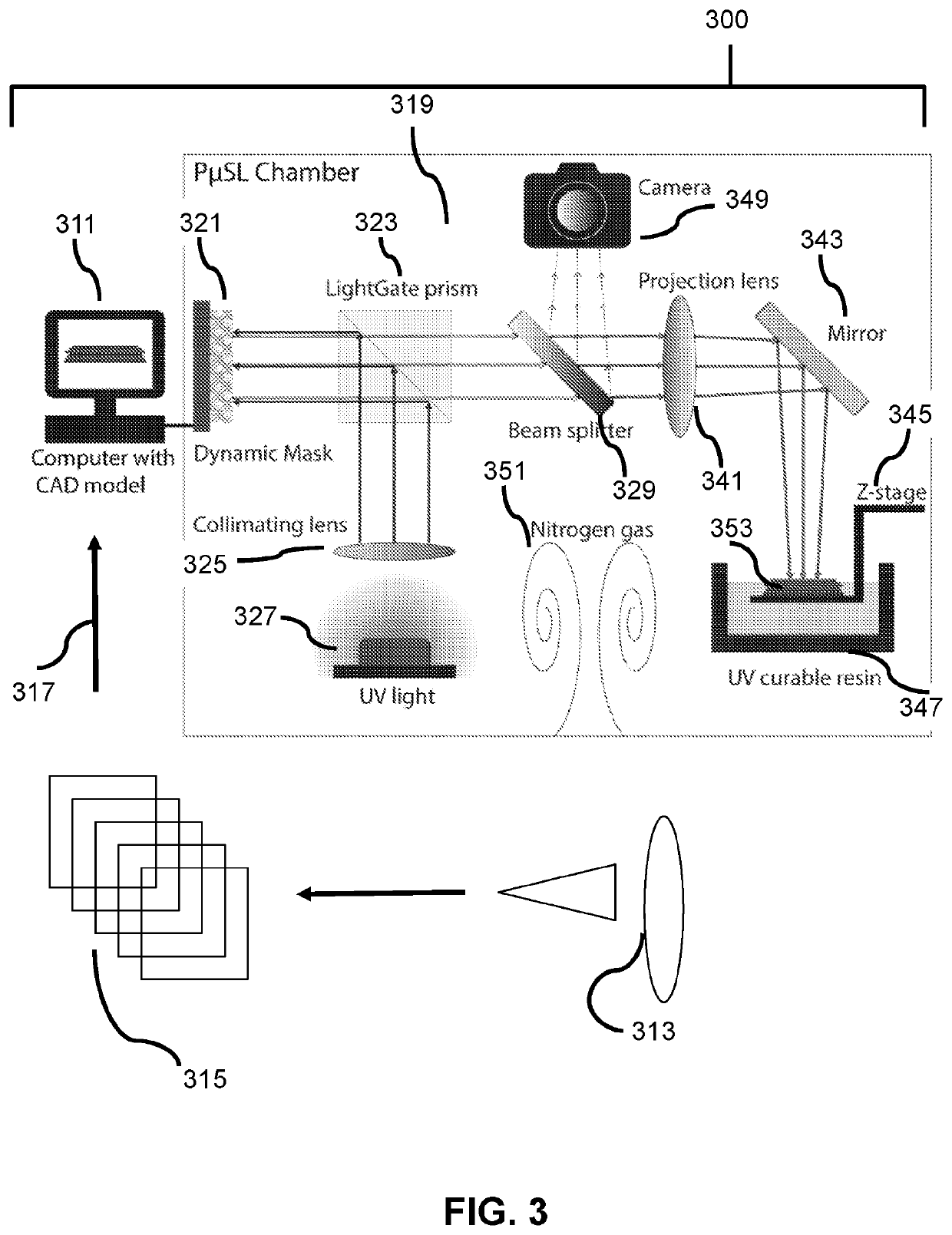High-throughput 3D printing of customized aspheric imaging lenses
- Summary
- Abstract
- Description
- Claims
- Application Information
AI Technical Summary
Benefits of technology
Problems solved by technology
Method used
Image
Examples
examples
[0171]The articles of manufacture and associated systems, apparatus, and methods can be illustrated through the following examples.
[0172]Photocurable resin: For the sample material, the photocurable resin consists of 94 wt. % 1,6-hexanedioldiacrylate (HDDA, Sigma-Aldrich, refractive index=1.456) as the low-viscosity monomer, and 1 wt. % Irgacure 819 (BASF) as the photoinitiator. A 5% wt. % 2-(2H-Benzotriazol-2-yl)-6-dodecyl-4-methylphenol (Sigma Aldrich, named by BASF as Tinuvin 171) was used as a UV absorber to control the curing depth, and the refractive index of the photocurable resin is plotted in FIG. 10.
[0173]Projection micro-stereolithography (PμSL) system: The PμSL system can be employed to manufacture the optical elements, as shown in FIG. 6A. The PμSL system uses a liquid crystal on a silicone (LCoS) chip as the dynamic mask with a resolution of 1400×1050 pixel2. By toggling the voltage applied to each individual pixel, the orientation of liquid crystal molecules can be co...
PUM
| Property | Measurement | Unit |
|---|---|---|
| Temperature | aaaaa | aaaaa |
| Time | aaaaa | aaaaa |
| Time | aaaaa | aaaaa |
Abstract
Description
Claims
Application Information
 Login to View More
Login to View More - Generate Ideas
- Intellectual Property
- Life Sciences
- Materials
- Tech Scout
- Unparalleled Data Quality
- Higher Quality Content
- 60% Fewer Hallucinations
Browse by: Latest US Patents, China's latest patents, Technical Efficacy Thesaurus, Application Domain, Technology Topic, Popular Technical Reports.
© 2025 PatSnap. All rights reserved.Legal|Privacy policy|Modern Slavery Act Transparency Statement|Sitemap|About US| Contact US: help@patsnap.com



